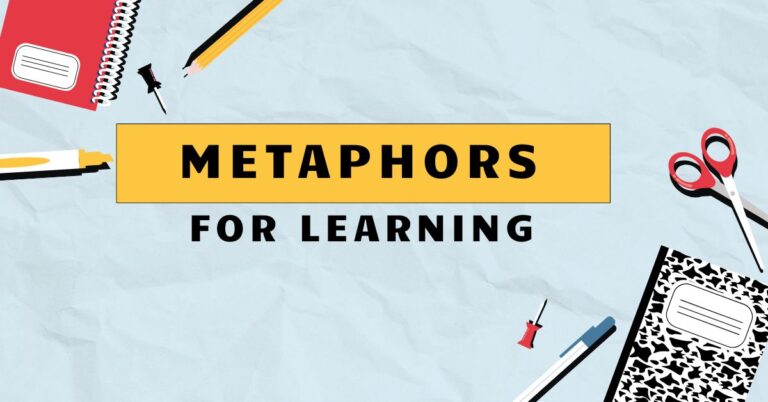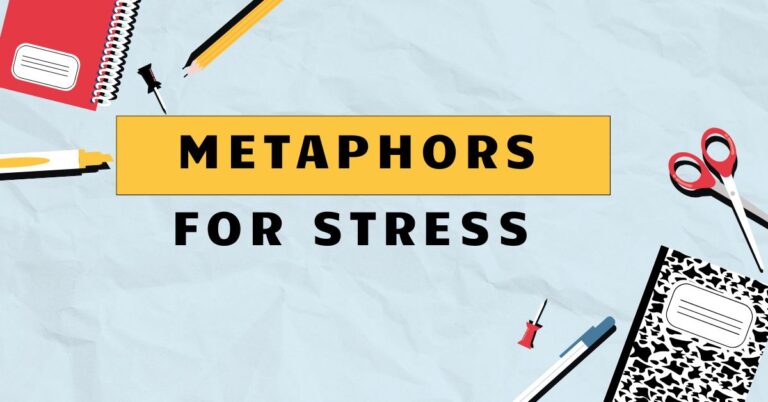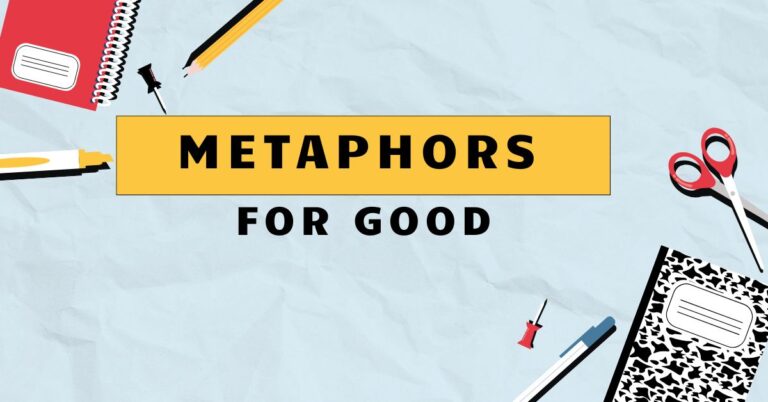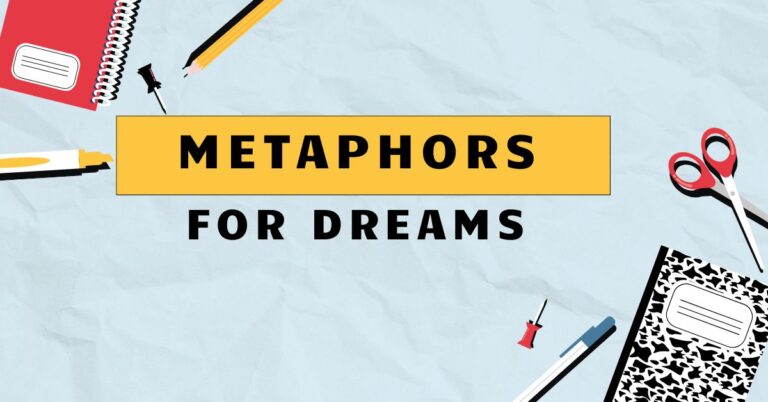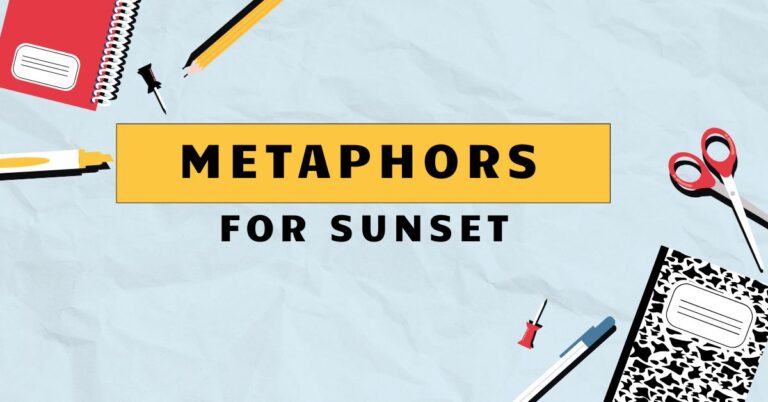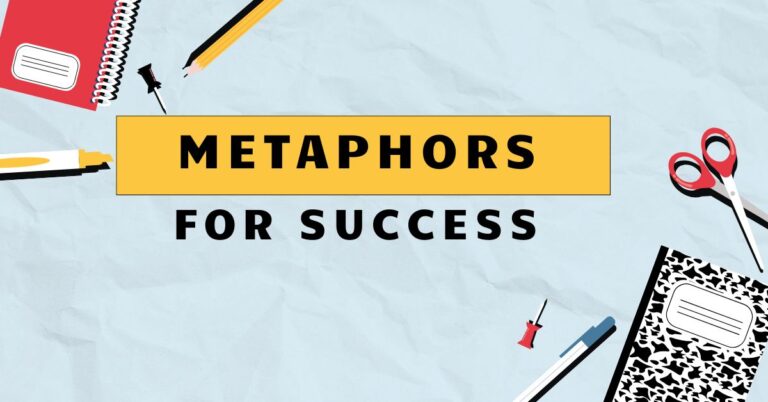45 Addiction as Metaphor: Understanding Figurative Language
Metaphors are powerful tools in the English language, allowing us to understand abstract concepts by relating them to more concrete experiences. When discussing addiction, metaphors become particularly important.
They help us grasp the complex and often misunderstood nature of this condition, providing vivid and relatable imagery. This article explores the various ways addiction is metaphorically represented in language, examining the grammatical structures and rhetorical effects these metaphors create.
Understanding these metaphors is crucial for anyone seeking to communicate effectively about addiction, whether in academic, professional, or personal contexts. This guide is tailored for students, writers, healthcare professionals, and anyone interested in the intersection of language and addiction.
By examining common metaphors for addiction, we gain a deeper understanding of the cultural perceptions and emotional realities associated with this challenging issue. This knowledge enhances our ability to empathize, communicate, and advocate for those affected by addiction.
Table of Contents
- Introduction
- Definition of Metaphor and Addiction
- Structural Breakdown of Addiction Metaphors
- Types and Categories of Addiction Metaphors
- Examples of Addiction Metaphors
- Usage Rules for Addiction Metaphors
- Common Mistakes in Using Addiction Metaphors
- Practice Exercises
- Advanced Topics in Addiction Metaphors
- Frequently Asked Questions (FAQ)
- Conclusion
Definition of Metaphor and Addiction
What is a Metaphor?
A metaphor is a figure of speech that directly compares two unlike things without using “like” or “as.” It asserts that one thingisanother, creating a connection that illuminates a shared quality or characteristic. Metaphors are essential for understanding abstract or complex concepts by relating them to something more concrete and familiar.
They enrich language by adding layers of meaning and emotional resonance.
For example, saying “time is money” doesn’t mean time can be literally exchanged for currency. Instead, it suggests that time, like money, is a valuable resource that should be used wisely.
This comparison highlights the importance and finite nature of time, making it more tangible and relatable.
What is Addiction?
Addiction is a complex condition characterized by compulsive engagement in a behavior or substance, despite harmful consequences. It involves changes in brain structure and function, leading to intense cravings and a diminished ability to control impulses.
Addiction can manifest in various forms, including substance use disorders (e.g., alcohol, opioids, stimulants) and behavioral addictions (e.g., gambling, gaming, internet use). It is a chronic, relapsing disease that requires ongoing treatment and support.
The impact of addiction extends beyond the individual, affecting families, communities, and society as a whole. It is often accompanied by mental health issues, social isolation, and financial difficulties.
Understanding the multifaceted nature of addiction is crucial for developing effective prevention and treatment strategies.
Structural Breakdown of Addiction Metaphors
Subject and Vehicle
Every metaphor consists of two key components: thesubjectand thevehicle. The subject is the topic being discussed (in this case, addiction), while the vehicle is the concept used to describe or explain the subject.
The vehicle provides a new perspective on the subject, highlighting certain aspects and obscuring others.
For example, in the metaphor “Addiction is a monster,” the subject is “addiction,” and the vehicle is “monster.” The metaphor suggests that addiction is destructive, uncontrollable, and terrifying, like a monster. This comparison evokes strong emotions and helps to convey the severity of the condition.
Implicit vs. Explicit Metaphors
Metaphors can be either explicit or implicit. An explicit metaphor directly states the comparison, often using the verb “to be.” An implicit metaphor, on the other hand, implies the comparison without directly stating it.
Explicit Metaphor: “Addiction is a prison.” (Directly states the comparison)
Implicit Metaphor: “The chains of addiction held him captive.” (Implies imprisonment without directly stating it)
Both types of metaphors can be effective in conveying the meaning of addiction, but implicit metaphors often require more interpretation and can be more subtle and nuanced.
Types and Categories of Addiction Metaphors
Addiction as a Disease
This is one of the most common and widely accepted metaphors for addiction. Framing addiction as a disease helps to destigmatize the condition and emphasize its biological and psychological components.
It suggests that addiction is not simply a matter of willpower or moral failing, but a complex health issue that requires medical treatment and support.
This metaphor often involves comparing addiction to other chronic diseases like diabetes or heart disease, highlighting the need for ongoing management and relapse prevention.
Addiction as a Battle
This metaphor portrays addiction as a struggle or conflict, often involving the individual fighting against their cravings and impulses. It emphasizes the effort, determination, and resilience required to overcome addiction.
This metaphor can be empowering, but it can also be isolating and create a sense of pressure to “win” the battle.
Terms like “fighting addiction,” “battling cravings,” and “winning the war against drugs” are common examples of this metaphor.
Addiction as Imprisonment
This metaphor highlights the feeling of being trapped or controlled by addiction. It suggests that the individual is no longer free to make their own choices and is instead held captive by their cravings and compulsions.
This metaphor can evoke feelings of hopelessness and despair, but it can also emphasize the need for liberation and recovery.
Phrases like “held hostage by addiction,” “chained to drugs,” and “imprisoned by their cravings” are examples of this metaphor.
Addiction as a Monster
This metaphor portrays addiction as a destructive and malevolent force that consumes the individual and their relationships. It emphasizes the harmful and uncontrollable nature of addiction.
This metaphor can be particularly powerful in conveying the devastating impact of addiction on individuals and families.
Examples include “the monster of addiction,” “consumed by their demons,” and “a destructive force.”
Addiction as a Relationship
This metaphor frames addiction as a dysfunctional or unhealthy relationship, often characterized by dependence, codependency, and abuse. It highlights the emotional and psychological dynamics involved in addiction.
This metaphor can help individuals understand the complex and often contradictory feelings they have towards their addiction.
Phrases like “an unhealthy attachment,” “a toxic relationship,” and “dependent on their addiction” are examples of this metaphor.
Addiction as a Burden
This metaphor depicts addiction as a heavy weight or obstacle that individuals must carry, hindering their progress and well-being. It underscores the emotional, physical, and social toll addiction takes on a person’s life, emphasizing feelings of exhaustion, isolation, and hopelessness.
Examples include “carrying the weight of addiction,” “burdened by their cravings,” and “a heavy cross to bear.”
Examples of Addiction Metaphors
The following tables provide extensive examples of each type of addiction metaphor, illustrating their usage in various contexts. These examples demonstrate the versatility and power of metaphorical language in conveying the complex nature of addiction.
Addiction as Disease Examples
This table illustrates how addiction is metaphorically represented as a disease, emphasizing its biological, psychological, and social dimensions. It highlights the need for medical treatment and ongoing management.
| Metaphor | Explanation |
|---|---|
| Addiction is a chronic illness. | Compares addiction to long-term diseases like diabetes or asthma. |
| He’s battling the disease of addiction. | Frames addiction as a medical condition that requires active treatment. |
| Addiction is a sickness of the brain. | Highlights the neurological changes associated with addiction. |
| She’s recovering from the disease of addiction. | Emphasizes the ongoing process of healing and recovery. |
| Addiction is a progressive disease. | Indicates that addiction worsens over time if left untreated. |
| The disease of addiction took hold of him. | Suggests that addiction has a powerful and controlling influence. |
| Addiction is a treatable disease. | Offers hope and emphasizes the possibility of recovery. |
| He was diagnosed with addiction. | Uses medical terminology to describe the condition. |
| Addiction is a public health crisis. | Frames addiction as a widespread societal problem. |
| She sought treatment for her addiction. | Emphasizes the importance of seeking medical help. |
| Addiction is a family disease. | Highlights the impact of addiction on family members. |
| He’s managing his addiction with medication. | Compares addiction management to managing other chronic conditions. |
| Addiction is a relapsing disease. | Acknowledges the possibility of relapse and the need for ongoing support. |
| The symptoms of addiction were overwhelming. | Uses medical terminology to describe the condition. |
| Addiction is a silent killer. | Emphasizes the serious health consequences of addiction. |
| He’s fighting the symptoms of his addiction. | Frames addiction as a medical condition that requires active treatment. |
| She’s in remission from addiction. | Compares addiction recovery to cancer remission. |
| Addiction is an epidemic. | Frames addiction as a widespread societal problem. |
| He needs urgent care for his addiction. | Emphasizes the importance of seeking medical help. |
| Addiction is a mental health disorder. | Highlights the psychological changes associated with addiction. |
Addiction as Battle Examples
This table provides examples of how addiction is metaphorically represented as a battle, emphasizing the struggle, effort, and determination required to overcome it. It highlights the internal conflict and the external challenges faced by individuals battling addiction.
| Metaphor | Explanation |
|---|---|
| He’s fighting addiction. | Portrays addiction as an enemy to be defeated. |
| She’s battling her demons. | Refers to the internal struggles and cravings associated with addiction. |
| He’s waging a war against drugs. | Emphasizes the intense and ongoing nature of the struggle. |
| She’s winning the battle against addiction. | Suggests progress and success in overcoming addiction. |
| He’s losing the fight against his cravings. | Indicates a setback or relapse in the recovery process. |
| She’s arming herself with coping strategies. | Suggests preparing for the challenges of recovery. |
| He’s surrendering to his addiction. | Indicates a loss of control and a return to addictive behaviors. |
| She’s a warrior in recovery. | Portrays the individual as strong and resilient. |
| He’s facing his addiction head-on. | Emphasizes courage and determination in confronting the problem. |
| She’s conquering her addiction. | Suggests complete victory over addiction. |
| He’s defending himself against relapse. | Highlights the need for vigilance and prevention. |
| She’s a survivor of the addiction battle. | Portrays the individual as having overcome significant challenges. |
| He’s fighting an uphill battle. | Indicates that the struggle is difficult and challenging. |
| She’s at war with her impulses. | Emphasizes the internal struggle to resist cravings. |
| He’s struggling on the front lines of recovery. | Portrays the individual as being actively engaged in the recovery process. |
| She’s deploying new strategies to combat her addiction. | Suggests a proactive approach to managing addiction. |
| He’s a casualty of the war on drugs. | Highlights the devastating consequences of addiction. |
| She’s regrouping after a setback in her battle with addiction. | Acknowledges the possibility of relapse and the need for resilience. |
| He’s gaining ground in his fight against addiction. | Suggests progress and improvement in the recovery process. |
| She’s a veteran of the addiction war. | Portrays the individual as experienced and knowledgeable in overcoming addiction. |
Addiction as Imprisonment Examples
This table illustrates how addiction is metaphorically represented as imprisonment, emphasizing the feeling of being trapped, controlled, and deprived of freedom. It highlights the loss of autonomy and the struggle for liberation.
| Metaphor | Explanation |
|---|---|
| He’s trapped by addiction. | Suggests a lack of freedom and control. |
| She’s held hostage by her cravings. | Emphasizes the power of cravings to control behavior. |
| He’s chained to his addiction. | Portrays addiction as a binding force. |
| She’s imprisoned by her habits. | Highlights the repetitive and compulsive nature of addictive behaviors. |
| He’s a prisoner of his own desires. | Emphasizes the internal conflict and lack of self-control. |
| She’s confined by her addiction. | Suggests a limitation of opportunities and experiences. |
| He’s serving a life sentence of addiction. | Portrays addiction as a long-term and debilitating condition. |
| She’s breaking free from the chains of addiction. | Suggests progress and liberation from addiction. |
| He’s escaping the prison of addiction. | Emphasizes the desire for freedom and recovery. |
| She’s liberating herself from addiction. | Portrays the individual as actively taking control of her life. |
| He’s finding freedom in recovery. | Highlights the positive aspects of sobriety. |
| She’s unlocking the doors to a new life. | Suggests new opportunities and possibilities in recovery. |
| He’s a fugitive from his addiction. | Portrays the individual as running away from their problems. |
| She’s walled in by her addiction. | Emphasizes the feeling of isolation and confinement. |
| He’s shackled by his dependencies. | Portrays addiction as a physical and emotional restraint. |
| She’s breaking down the barriers of her addiction. | Suggests progress in overcoming obstacles to recovery. |
| He’s a runaway from his addiction. | Portrays the individual as avoiding their problems. |
| She’s finding asylum from her addiction in recovery. | Suggests that recovery provides safety and refuge. |
| He’s tunneling out of the depths of his addiction. | Emphasizes the arduous and challenging nature of recovery. |
| She’s a parolee from the prison of addiction. | Portrays the individual as being on probation and needing to maintain sobriety. |
Addiction as Monster Examples
This table provides examples of how addiction is metaphorically represented as a monster, emphasizing its destructive, terrifying, and uncontrollable nature. It highlights the devastating impact of addiction on individuals and their relationships.
| Metaphor | Explanation |
|---|---|
| Addiction is a monster lurking in the shadows. | Portrays addiction as a hidden and dangerous threat. |
| He’s battling the monster of addiction. | Emphasizes the strength and determination required to overcome addiction. |
| She’s consumed by her demons. | Suggests that addiction has taken over her life. |
| He’s haunted by his addiction. | Portrays addiction as a persistent and tormenting presence. |
| She’s wrestling with her inner demons. | Emphasizes the internal struggle and conflict. |
| He’s being devoured by addiction. | Suggests that addiction is destroying him from the inside out. |
| She’s slaying the monster of addiction. | Portrays the individual as victorious and triumphant. |
| He’s banishing his demons to the past. | Suggests a permanent end to the struggle with addiction. |
| She’s taming the beast of addiction. | Portrays the individual as gaining control over their addiction. |
| He’s facing his demons head-on. | Emphasizes courage and determination in confronting the problem. |
| She’s exorcising her addiction from her life. | Suggests a complete and permanent removal of addiction. |
| He’s a survivor of the monster of addiction. | Portrays the individual as having overcome significant challenges. |
| She’s being stalked by her addiction. | Emphasizes the persistent and relentless nature of addiction. |
| He’s wrestling with his inner demons. | Emphasizes the internal struggle and conflict. |
| She’s being ravaged by her addiction. | Suggests that addiction is causing significant damage. |
| He’s trying to outrun the monster of addiction. | Portrays the individual as attempting to escape from their problems. |
| She’s building defenses against the monster of addiction. | Suggests a proactive approach to managing addiction. |
| He’s a victim of the monster of addiction. | Highlights the devastating consequences of addiction. |
| She’s cutting off the monster’s head. | Portrays the individual as taking decisive action to overcome addiction. |
| He’s driving the monster of addiction into the abyss. | Suggests a complete and permanent removal of addiction. |
Addiction as Relationship Examples
This table illustrates how addiction is metaphorically represented as a relationship, emphasizing the emotional, psychological, and behavioral dynamics involved. It highlights the dependence, codependency, and abuse that can characterize addictive relationships.
| Metaphor | Explanation |
|---|---|
| He has an unhealthy relationship with alcohol. | Portrays addiction as a dysfunctional and damaging connection. |
| She’s in a toxic relationship with drugs. | Emphasizes the harmful and destructive nature of addiction. |
| He’s dependent on his addiction. | Suggests a reliance and need for the addictive substance or behavior. |
| She’s codependent with her addiction. | Highlights the enabling and reinforcing dynamics of addiction. |
| He’s breaking up with his addiction. | Portrays the individual as ending a harmful relationship. |
| She’s divorcing herself from her addiction. | Suggests a complete and permanent separation from addiction. |
| He’s rebuilding his life after the addiction affair. | Portrays addiction as a betrayal and a violation of trust. |
| She’s healing from the trauma of the addiction relationship. | Emphasizes the emotional and psychological wounds caused by addiction. |
| He’s setting boundaries with his addiction. | Suggests a proactive approach to managing triggers and cravings. |
| She’s defining her own identity apart from her addiction. | Emphasizes the importance of self-discovery and self-acceptance in recovery. |
| He’s learning to love himself without addiction. | Portrays self-love and self-care as essential components of recovery. |
| She’s having an affair with her addiction. | Portrays the addictive behavior as a secret and destructive relationship. |
| He’s in a love-hate relationship with his addiction. | Emphasizes the conflicting emotions and ambivalence associated with addiction. |
| She’s trying to end her engagement with addiction. | Portrays the individual as breaking free from a binding commitment. |
| He’s in a codependent dance with his addiction. | Highlights the enabling and reinforcing dynamics of addiction. |
| She’s realizing the abusive nature of her addiction. | Emphasizes the harmful and destructive impact of addiction. |
| He’s learning to detach from his addiction. | Suggests a healthy separation and emotional distance from the addictive behavior. |
| She’s giving her addiction the silent treatment. | Portrays the individual as ignoring and resisting cravings. |
| He’s cutting ties with his addiction. | Suggests a complete and permanent separation from addiction. |
| She’s sending her addiction a restraining order. | Portrays the individual as setting strict boundaries and preventing relapse. |
Addiction as Burden Examples
This table illustrates how addiction is metaphorically represented as a burden, emphasizing the weight, obstacle, and toll it takes on individuals. It highlights the feelings of exhaustion, isolation, and hopelessness.
| Metaphor | Explanation |
|---|---|
| He’s carrying the weight of addiction. | Portrays addiction as a heavy and oppressive burden. |
| She’s burdened by her cravings. | Emphasizes the constant and overwhelming nature of cravings. |
| He’s dragging the chains of addiction. | Suggests a lack of freedom and mobility. |
| She’s weighed down by her habits. | Highlights the repetitive and compulsive nature of addictive behaviors. |
| He’s shouldering the burden of addiction. | Portrays the individual as taking responsibility for their addiction. |
| She’s collapsing under the weight of addiction. | Suggests a loss of control and a descent into despair. |
| He’s shedding the burden of addiction. | Portrays the individual as releasing themselves from a heavy load. |
| She’s lightening her load by seeking help. | Emphasizes the importance of seeking support and treatment. |
| He’s unburdening himself from addiction. | Suggests a process of healing and recovery. |
| She’s finding relief from the burden of addiction. | Highlights the positive aspects of sobriety. |
| He’s a pack mule for his addiction. | Portrays the individual as carrying the burdens and consequences of addiction. |
| She’s weighed down by the shame of her addiction. | Emphasizes the emotional and psychological toll of addiction. |
| He’s dragging the baggage of his addiction with him. | Portrays the individual as carrying the negative experiences and consequences of addiction. |
| She’s struggling under the yoke of her addiction. | Emphasizes the oppressive and restrictive nature of addiction. |
| He’s being crushed by the weight of his addiction. | Suggests that addiction is overwhelming and debilitating. |
| She’s finding buoyancy by releasing the burden of her addiction. | Portrays the individual as experiencing a sense of lightness and freedom. |
| He’s offloading the weight of his addiction onto his support group. | Emphasizes the importance of seeking help and sharing the burden with others. |
| She’s a beast of burden for her addiction. | Portrays the individual as being exploited and used by their addiction. |
| He’s being crippled by the burden of his addiction. | Highlights the devastating consequences of addiction. |
| She’s throwing off the shackles of her addiction. | Portrays the individual as breaking free from a binding commitment. |
Usage Rules for Addiction Metaphors
Contextual Appropriateness
The effectiveness of an addiction metaphor depends heavily on the context in which it is used. Consider your audience, the purpose of your communication, and the overall tone you wish to convey.
Some metaphors may be more appropriate for academic or professional settings, while others may be better suited for personal conversations or creative writing.
For instance, the “addiction as disease” metaphor is often used in medical and scientific contexts to emphasize the biological and psychological aspects of addiction. In contrast, the “addiction as monster” metaphor may be more effective in conveying the emotional impact of addiction in personal narratives or fiction.
Avoiding Stigmatization
It is crucial to use addiction metaphors in a way that avoids stigmatizing or dehumanizing individuals struggling with addiction. Metaphors should be used to promote understanding, empathy, and support, rather than to reinforce negative stereotypes or blame individuals for their condition.
Avoid metaphors that portray individuals as weak, morally deficient, or deserving of punishment.
Instead of saying “He’s a slave to his addiction,” which implies a lack of willpower, consider saying “He’s trapped by addiction,” which emphasizes the feeling of being controlled by a powerful force.
Common Mistakes in Using Addiction Metaphors
Mixed Metaphors
A mixed metaphor combines two or more incompatible metaphors, creating a confusing or nonsensical image. Avoid mixing metaphors when discussing addiction, as it can detract from the clarity and impact of your message.
Incorrect: “He’s fighting the disease of addiction, but he’s also drowning in a sea of despair.” (Combines “addiction as battle” and “addiction as drowning”)
Correct: “He’s fighting the disease of addiction with courage and determination.” (Consistent “addiction as battle” metaphor)
Clichés and Overused Metaphors
Clichés are overused metaphors that have lost their originality and impact. While clichés may be easy to use, they can make your writing sound uninspired and predictable.
Try to avoid clichés when discussing addiction and instead opt for fresh and original metaphors that convey your message in a more compelling way.
Cliché: “He’s hit rock bottom.”
Original: “He reached a point where the consequences of his addiction became unbearable.”
Practice Exercises
Test your understanding of addiction metaphors with these practice exercises. Identify the type of metaphor used in each sentence and rewrite the sentence using a different type of metaphor.
| Question | Answer |
|---|---|
| 1. Addiction is a dark cloud hanging over his life. (What type of metaphor is this?) | Type: Addiction as Burden |
| 2. She’s battling the monster of addiction every day. (What type of metaphor is this?) | Type: Addiction as Monster |
| 3. He’s a prisoner of his own cravings. (What type of metaphor is this?) | Type: Addiction as Imprisonment |
| 4. Addiction is a disease that requires treatment. (What type of metaphor is this?) | Type: Addiction as Disease |
| 5. She’s in a toxic relationship with her addiction. (What type of metaphor is this?) | Type: Addiction as Relationship |
| 6. He’s weighed down by the shame of his addiction. (What type of metaphor is this?) | Type: Addiction as Burden |
| 7. She’s fighting an uphill battle against her addiction. (What type of metaphor is this?) | Type: Addiction as Battle |
| 8. He’s trapped in the cycle of addiction. (What type of metaphor is this?) | Type: Addiction as Imprisonment |
| 9. Addiction is a monster that devours everything in its path. (What type of metaphor is this?) | Type: Addiction as Monster |
| 10. She’s dependent on her addiction for comfort. (What type of metaphor is this?) | Type: Addiction as Relationship |
| Question | Answer |
|---|---|
| 1. Rewrite “Addiction is a dark cloud hanging over his life” using the “Addiction as Battle” metaphor. | He’s fighting a constant battle against the darkness of addiction. |
| 2. Rewrite “She’s battling the monster of addiction every day” using the “Addiction as Disease” metaphor. | She’s managing the symptoms of the disease of addiction every day. |
| 3. Rewrite “He’s a
prisoner of his own cravings” using the “Addiction as Burden” metaphor. |
He’s carrying the heavy weight of his cravings. |
| 4. Rewrite “Addiction is a disease that requires treatment” using the “Addiction as Battle” metaphor. | Addiction is a battle that requires strategic intervention. |
| 5. Rewrite “She’s in a toxic relationship with her addiction” using the “Addiction as Monster” metaphor. | She’s being consumed by the monster of her addiction. |
| 6. Rewrite “He’s weighed down by the shame of his addiction” using the “Addiction as Imprisonment” metaphor. | He’s confined by the shame of his addiction. |
| 7. Rewrite “She’s fighting an uphill battle against her addiction” using the “Addiction as Disease” metaphor. | She’s managing the progressive symptoms of her addiction. |
| 8. Rewrite “He’s trapped in the cycle of addiction” using the “Addiction as Monster” metaphor. | He’s being stalked by the monster of addiction. |
| 9. Rewrite “Addiction is a monster that devours everything in its path” using the “Addiction as Relationship” metaphor. | Addiction is a toxic relationship that consumes everything. |
| 10. Rewrite “She’s dependent on her addiction for comfort” using the “Addiction as Burden” metaphor. | She’s burdened by her need for addiction as comfort. |
Advanced Topics in Addiction Metaphors
Extended Metaphors
An extended metaphor is a metaphor that is developed over several lines or even throughout an entire work. It allows for a more complex and nuanced exploration of the subject, creating a deeper and more lasting impression on the reader.
When using extended metaphors for addiction, consider how you can develop the initial comparison to reveal different facets of the condition.
For example, the “addiction as a storm” metaphor could be extended to describe the initial calm before the storm (the early stages of addiction), the gathering clouds (increasing cravings and triggers), the torrential rain and wind (the height of addictive behaviors), and the aftermath (the consequences and recovery process).
Submerged Metaphors
A submerged metaphor is a metaphor that is implied rather than explicitly stated. It relies on subtle cues and associations to create a metaphorical connection in the reader’s mind.
Submerged metaphors can be particularly effective in creating a sense of mystery or unease, but they also require careful crafting to ensure that the meaning is clear.
For example, a story about a character who is constantly drawn to a dark and dangerous forest could be interpreted as a submerged metaphor for addiction, with the forest representing the allure and peril of addictive behaviors.
Frequently Asked Questions (FAQ)
Why are metaphors important in discussing addiction?
Metaphors help to make the abstract and complex nature of addiction more understandable and relatable. They can evoke emotions, promote empathy, and destigmatize the condition.
How can I avoid using stigmatizing metaphors for addiction?
Focus on metaphors that emphasize the challenges and struggles faced by individuals with addiction, rather than those that portray them as weak or morally deficient. Avoid metaphors that reinforce negative stereotypes or blame individuals for their condition.
What are some common clichés to avoid when discussing addiction?
Avoid clichés such as “hit rock bottom,” “falling off the wagon,” and “a slippery slope.” These phrases have lost their originality and impact and can make your writing sound uninspired.
Can metaphors be harmful in the context of addiction?
Yes, if they are used in a way that stigmatizes, dehumanizes, or blames individuals with addiction. It is important to use metaphors responsibly and with sensitivity.
How can I develop more original and creative metaphors for addiction?
Think about the different aspects of addiction that you want to convey, such as the feeling of being trapped, the struggle against cravings, or the impact on relationships. Then, brainstorm different concepts or images that share similar qualities or characteristics.
Experiment with different combinations and see what resonates most effectively.
Conclusion
Metaphors are powerful tools for understanding and communicating about addiction. By using metaphors thoughtfully and responsibly, we can promote empathy, destigmatize the condition, and inspire hope for recovery.
Understanding the different types of addiction metaphors, their structural components, and the rules for their effective use is essential for anyone seeking to engage in meaningful conversations about this complex issue. As you continue to explore the language of addiction, remember to be mindful of the impact your words can have and strive to use metaphors that promote understanding and support.


